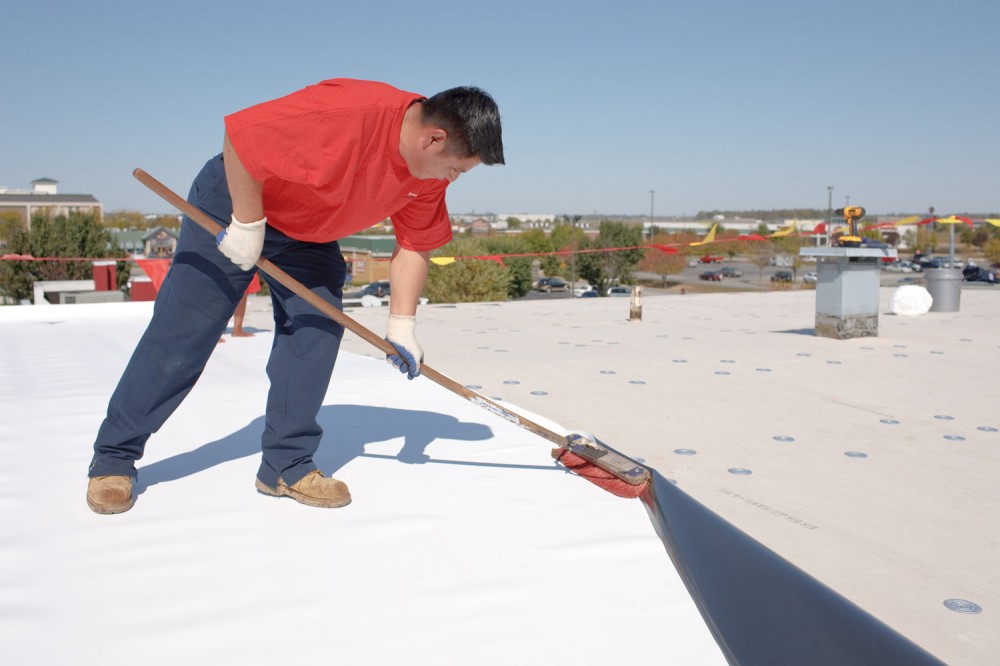
Each unique commercial roofing system has its own installation method. Residential roofing methods tend to be very similar in installation processes, but commercial projects can vary greatly. This difference can be due to installation method, duration, safety and difficulty. Below we’ve gone into detail on the more common commercial roof types and the installation process for each.
Sprayed Polyurethane Foam Installation
Sprayed Polyurethane foam is one of the simpler commercial roof installations due to its limited number of steps. The common three step procedure begins with a power washing of the existing roof to remove all debris and dirt. Next, the foam is sprayed directly onto the cleaned surface. This process may sound quick, but can become lengthy with the size and complexity of the roof. After installation of the foam, it can be coated in silicone or acrylic coating to ensure protection from UV rays and the elements.
Single-Ply Installation
Installing Single-Ply materials is a seemingly straightforward process with fewer steps as compared to other methods; although, this process can be time-consuming and difficult due to the need for consistency. First, the material is rolled on to the surface of the roof. Wider rolls of material tend to lead to fewer seams and therefore fewer leaks. After the material is rolled out it is then adhered to the roof using glues, tapes, or other heat applicants.
Restoration Coatings Installation
Restoration coatings are arguably the easiest method of roof installation. The coating is designed for application to an existing roof, so it is not an appropriate method for a new roof. This method is primarily meant to extend the life of the current system. The first step is washing the surface to remove debris and dirt. If the roof isn’t properly cleaned, the coating won’t adhere properly. Step two is to apply a layer of the coating and wait for it to dry.
Shingle Installation
The first major steps in the shingle installation process, much like the previous methods, is to prep and clean the roof. The previous shingles and flashing will then be removed with caution. The new flashing is installed to create a protective barrier between your building and the elements. A starter shingle is begun at the bottom of the roof, ensuring that a straight course and pre-planned layout are being followed. Now that the roof is planned out it all comes down to properly nailing the shingles into the substrate.
Call us today to learn which method of installation is perfect for your business!